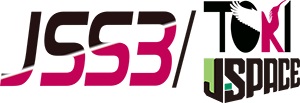Research on Airframe Noise Reduction Design (FQUROH-A)
JAXA Supercomputer System Annual Report February 2021-January 2022
Report Number: R21EDA101R21
Subject Category: Aeronautical Technology
- Responsible Representative: Yasushi Watanabe, Program Director of Aviation Technology, Aviation Technology Directorate
- Contact Information: Takehisa Takaishi, Airframe Noise Reduction Team, Aviation Technology Directorate(takaishi.takehisa@jaxa.jp)
- Members: Takehisa Takaishi, Mitsuhiro Murayama, Yasushi Ito, Ryotaro Sakai, Kazuomi Yamamoto, Kazuki Fukaya, Kentaro Tanaka, Tohru Hirai, Gen Nakano, Takashi Ishida
Abstract
In order to meet the projected demand for air passengers, and to strengthen the international competitiveness of Japan airports and improve the convenience of passengers, major airports are considering increasing the number of takeoffs and landings. The maturity of the technology for the reduction of airframe noise generated at high-lift devices and landing gear needs to be increased to achieve noise reduction in areas surrounding airports even with the expected increased number of takeoffs and landings. In this project, we have been developing a flight test plan using a commercial airplane that demonstrates the reduction of airframe noise as part of activities aimed at practical development of the airframe noise reduction technology. Computational simulations have been utilized to verify the feasibility of practical noise reduction concepts and design methods. This computational activity based on Large/Detached Eddy Simulations (LES/DES) is used to understand the mechanism of noise sources, to predict noise levels and to design noise reduction devices.
Reference URL
Please refer to http://www.aero.jaxa.jp/eng/research/ecat/fquroh/ .
Reasons and benefits of using JAXA Supercomputer System
The JSS3 was used to understand detailed physics of noise generation, and to optimize noise reduction designs. The FQUROH project aims to accelerate technology maturity of airframe noise reduction methods using advanced large-scale, high-fidelity computational simulations on the JSS3’s high performance computing platform and to demonstrate the high-fidelity design technologies through flight tests. Computational simulations using the JSS3 made it possible to design low-noise devices by understanding detailed physical phenomena, which was difficult to obtain only with wind tunnel tests.
Achievements of the Year
Unsteady flow simulations have been conducted to understand flow characteristics and mechanisms of the noise generation around leading-edge slats including slat tracks that have been found to be major noise sources for airframe noise during landing. The noise reduction devices for the slats have been designed by unsteady flow simulations.
Figure 1 shows results of the unsteady flow simulation around a 30P30N three-element high-lift airfoil, which has been used as a benchmark problem for slat noise predictions. The impact of slat tracks on the noise level and the noise sources have been investigated by the simulations.

Fig.1: Results of unsteady flow simulation around leading-edge slats with and without slat tracks (Iso-surfaces of Lambda2, pressure fluctuation dp/dt, root mean square pressure on the model surface)
Publications
N/A
Usage of JSS
Computational Information
- Process Parallelization Methods: MPI
- Thread Parallelization Methods: N/A
- Number of Processes: 192 – 256
- Elapsed Time per Case: 30 Hour(s)
JSS3 Resources Used
Fraction of Usage in Total Resources*1(%): 0.32
Details
Please refer to System Configuration of JSS3 for the system configuration and major specifications of JSS3.
| System Name | CPU Resources Used(Core x Hours) | Fraction of Usage*2(%) |
|---|---|---|
| TOKI-SORA | 7399427.41 | 0.36 |
| TOKI-ST | 28353.73 | 0.03 |
| TOKI-GP | 0.00 | 0.00 |
| TOKI-XM | 0.00 | 0.00 |
| TOKI-LM | 0.00 | 0.00 |
| TOKI-TST | 0.00 | 0.00 |
| TOKI-TGP | 0.00 | 0.00 |
| TOKI-TLM | 0.00 | 0.00 |
| File System Name | Storage Assigned(GiB) | Fraction of Usage*2(%) |
|---|---|---|
| /home | 69.00 | 0.07 |
| /data and /data2 | 16579.92 | 0.18 |
| /ssd | 579.48 | 0.15 |
| Archiver Name | Storage Used(TiB) | Fraction of Usage*2(%) |
|---|---|---|
| J-SPACE | 439.54 | 2.97 |
*1: Fraction of Usage in Total Resources: Weighted average of three resource types (Computing, File System, and Archiver).
*2: Fraction of Usage:Percentage of usage relative to each resource used in one year.
ISV Software Licenses Used
| ISV Software Licenses Used(Hours) | Fraction of Usage*2(%) | |
|---|---|---|
| ISV Software Licenses(Total) | 89.78 | 0.06 |
*2: Fraction of Usage:Percentage of usage relative to each resource used in one year.
JAXA Supercomputer System Annual Report February 2021-January 2022


